Back in November 2019, Sister Helena Burns, F.S.P. — a Daughter of St. Paul and “media nun” — delivered what could be described as an urgent and energetic appeal to the Theological College seminary community.
She called for wider, more intentional media literacy in line with Church teachings on the subject.
“Media is not a ‘God-free zone!’” Sister Helena boldly insisted, as she exhorted the group of seminarians gathered in Viéban Hall to more closely examine their media use through the optimistic — yet always prudently cautious — lens of the Church.
“The Internet is not purely virtual. What we do virtually is real,” she said. “We have a world in our hands! It matters!”
Who could have known how immediately relevant these words would soon become?
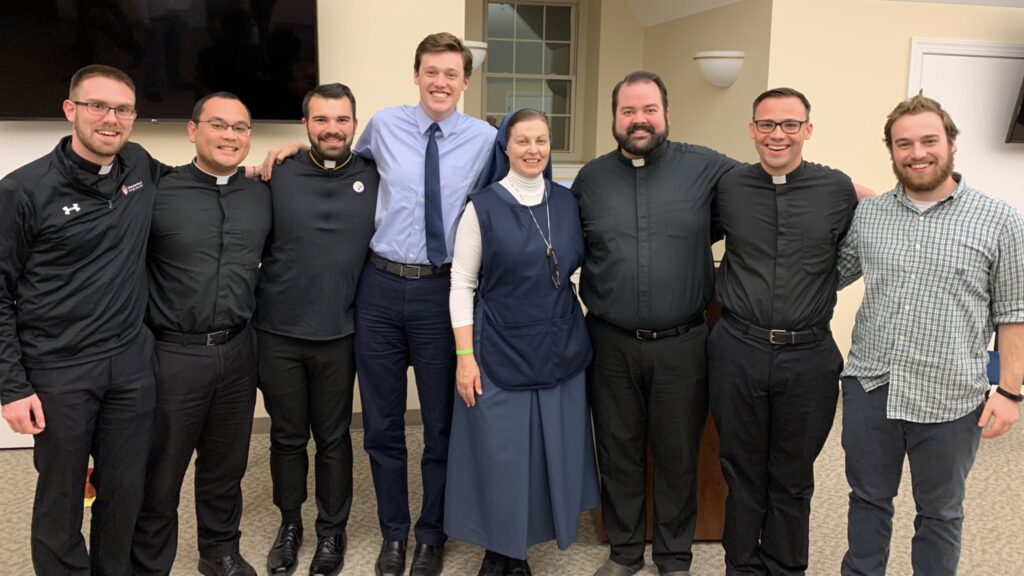
Swift Parish Response
As restrictions mounted in the face of the threat of the coronavirus in mid-March, the Church had to scramble to organize its resources in what seemed a matter of hours to meet a radically new pastoral landscape. Regular parish life now included live-streaming Mass, ZOOM meetings, and creative social media outreach as a matter of course. Even the most skeptical parishes didn’t have much of a choice.
As St. Paul himself once put it so well: “Necessity is laid upon me. Woe to me if I do not preach the Gospel!”
Parishes should absolutely be applauded for this fast-acting online outreach. Their urgent and on-the-fly online ministry positively affected so many people who were (and still are) longing for the Church’s proclamation of hope, peace, and courage in the face of so much anxiety.
Indeed, the swift media response to this crisis effectively “brought the Church” right into the homes of families, nursing homes, and makeshift homeschool programs. When social distancing became the status quo, the Church rose to the challenge and did what it could to proclaim the Gospel through the modern means of social communication, which have been at Her fingertips all along! This outreach has not been limited to Catholics, either. Estranged family members, friends, and the so-called “nones” (those with no religious affiliation) have all been beneficiaries of this content.
As Bishop Robert Barron told the Theological College community in a video message: “If we’re going to reach the unaffiliated, we have to use this tool which… through God’s providence has been made available to us.” He went on to exhort all seminarians: “One of the most important things you can do is prepare for this type of ministry.”
We met up with @BishopBarron yesterday at #USCCB19 to speak with him about the mission of the @AlberioneProj & the incredible need for the renewal of media evangelization in the Church.
— Alberione Project (@AlberioneProj) November 13, 2019
This was his exhortation to us and to all future priests – please share it! #BlesstheMedia pic.twitter.com/L6TlbTXGqX
What’s Next for Parish Media Outreach?
The next question on my mind, however, is: How will the COVID-19 crisis change the average parish’s use of media moving forward?
When, please God, we get back to “normal,” will we abandon the “digital continent” as Pope Benedict XVI once called the Internet? Will we gladly banish our video cameras, tripods, and microphones to the parish closet, never to be fiddled with again? Was all this just an unfortunate, necessary concession in the midst of crisis — or is media a tool worth investing in for the future evangelization needs of parish life?
These conversations are already beginning in parishes across the country, and we need to approach the question in a discerning way that avoids slipping back into what’s most comfortable and easy.
I strongly believe this painful experience has presented us with a unique opportunity to harness these means of communication moving forward in pastoral ministry. I have personally been pleasantly surprised to see the most unexpected priests and seminarians step up and learn how to use these tools so as to meet people where they are at: quarantined in front of a computer or smartphone screen.
Now, to be sure, as Sister Helena Burns herself made so beautifully clear in her presentation to our seminary, a smart phone screen is never a substitute for a human person! Personal, face-to-face relationships are absolutely essential.
“Our bodies are not optional,” Sr. Helena proclaimed in her presentation. In fact, they are precisely the means by which God has designed for each of us to make a “sincere gift of self.” The shocking beauty of the Incarnation is that the Word was made flesh at a particular time, in a particular place. Even so, I think we ought to resist the natural urge to toss our media efforts aside once we can return to some form of “business as usual.”
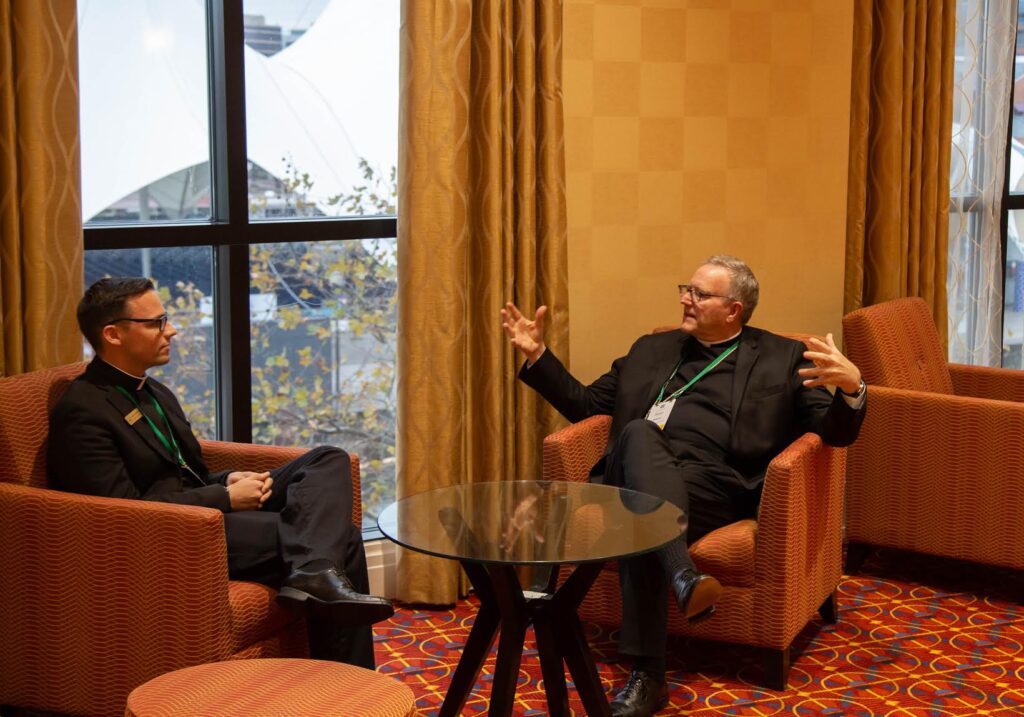
Media Use Must Support and Lead to Communion
Here’s the key: Any media evangelization we continue to undertake must always lead to authentic communion. We need to think of creative ways to engage parishioners, not to keep them glued to their screens, but to call them into deeper relationship with the Lord and with one another. Communion culminates most definitively in the source and summit of our faith: The Most Holy Eucharist. No live-streamed Mass can ever possibly replace being physically present before our Incarnate Lord in the Blessed Sacrament. Our media use, both during and after this pandemic, should flow from and lead back to the liturgy.
“There are those who let themselves be dragged by the current. Others use media in edification and joy.”
— Alberione Project (@AlberioneProj) November 20, 2018
– Bl. James Alberione –
If you’re going to use the media to share the faith, do it joyfully!pic.twitter.com/yrR8MErFN5
This is central to why the Alberione Project, a seminarian-led media evangelization initiative at Theological College, has always had the goal of pointing out the great need to keep communion at the center of any use of the modern media.
Regardless of the medium, whether we preach the Gospel via podcasts, Instagram stories, YouTube series, or Facebook live feeds, the end goal is always communion with our Risen Lord within the life of His Bride, the Church. Blessed James Alberione once said it beautifully: “From the Tabernacle, everything. Without the Tabernacle, nothing.” Any media initiative that does not have communion with the Lord and His Body the Church at the absolute center ought to be abandoned.
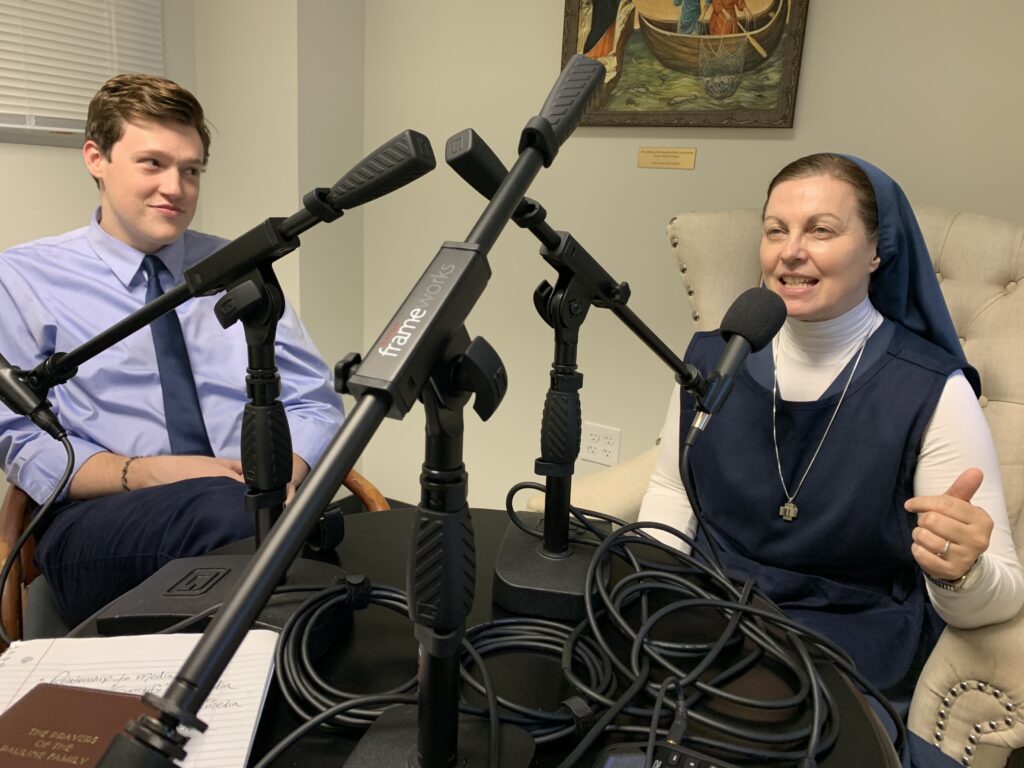
A Final Exhortation
It is my sincere hope and desire, therefore, that our experience as a Church in the midst of the coronavirus crisis will result in two crucial responses:
First, I hope these difficult months increase our appreciation and hunger for the deep, lived communion with our Lord in the Sacraments and our relationships with one another. Second, I pray it will inspire Church leadership, including seminary formators, to recognize the great gift and responsibility of using the media in a human way to reach people in their daily lives — quarantined or otherwise.
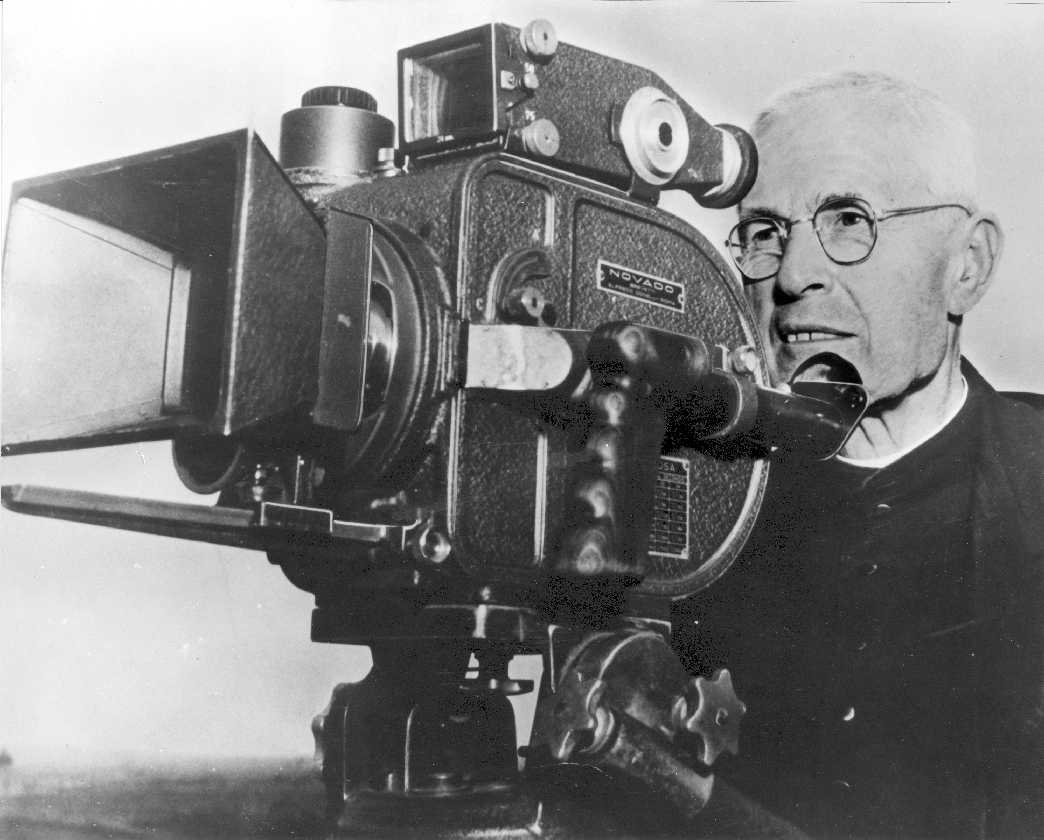
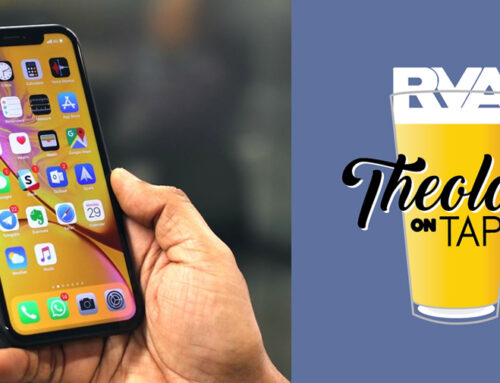
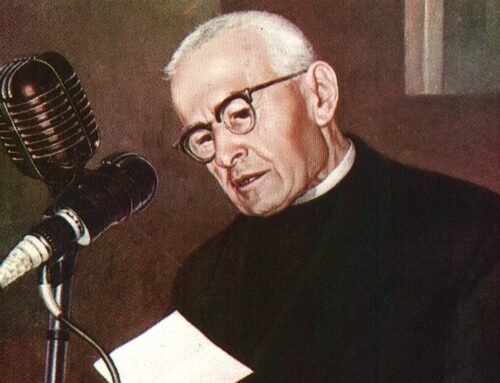
Hi, Father Anthony! Excellent article! My cousin is married to an Episcopal priest in NYC, and one evening this spring she invited me to participate in their parish Zoom call as he was leading Night Compline! I found it so beautiful that it inspired me to incorporate it into our own family’s evening prayer time… I never knew until this past year in hearing a friend speak on the Catechism that “the laity, too, are encouraged to recite the divine office, either with the priests, or among themselves, or even individually.” CCC 1175 Maybe a weekly Zoom call for Vespers would be a possibility during this “new normal” time for your new parish? Blessings to you as you move forward and discern the many possibilities and opportunities that Jesus has for you!!